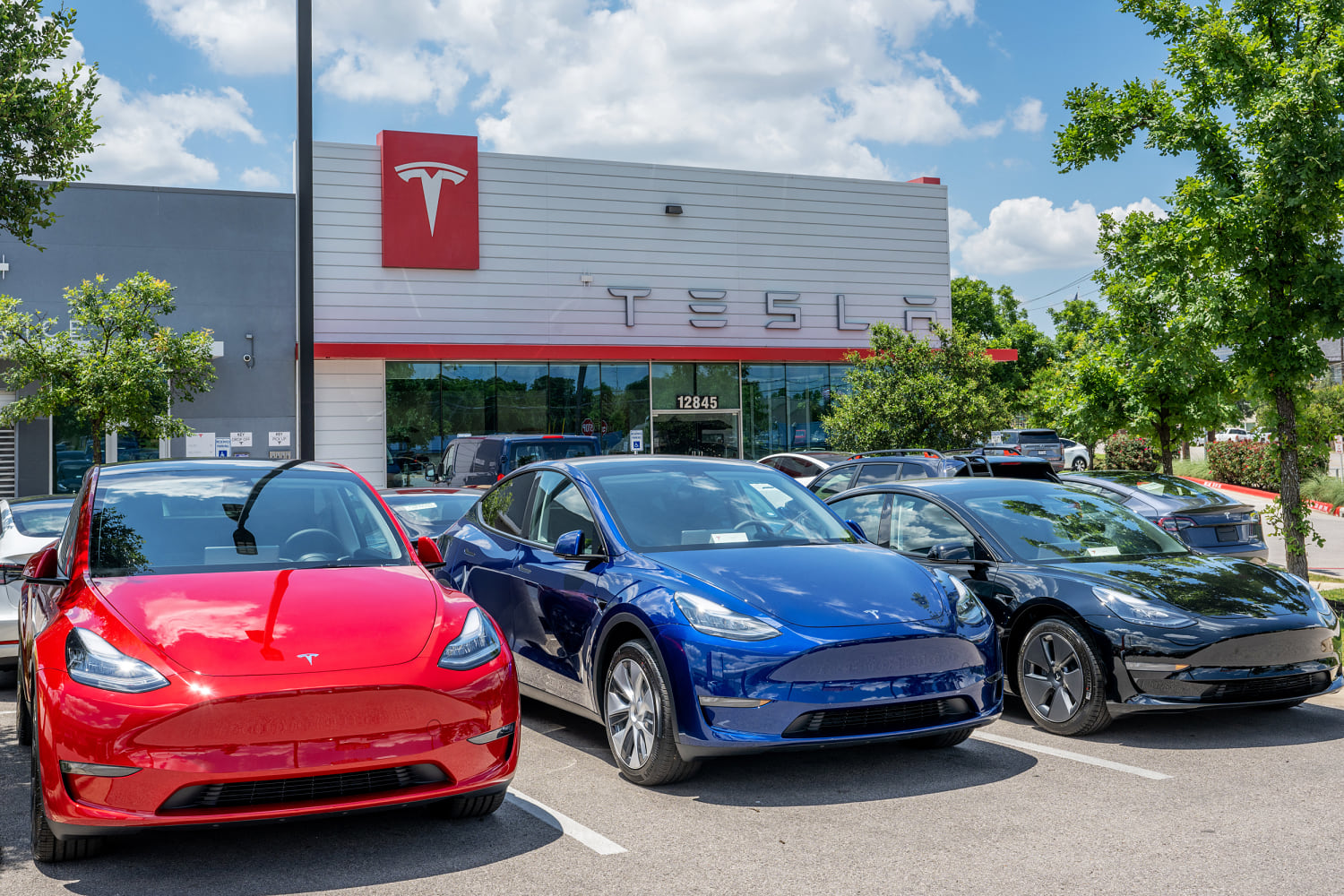
Tesla reported third-quarter earnings Wednesday that topped analysts’ estimates even as revenue came in just shy of expectations. The stock popped 10.7% in premarket trading.
Revenue increased 8% in the quarter from $23.35 billion a year earlier. Net income rose to about $2.17 billion, or 62 cents a share, from $1.85 billion, or 53 cents a share, a year ago.
Profit margins were bolstered by $739 million in automotive regulatory credit revenue during the quarter. Automakers are required to obtain a certain amount of regulatory credits each year. If they can’t meet the target, they can purchase credits from companies such as Tesla, which has excess credits because it makes only electric vehicles.
Automotive revenue increased 2% to $20 billion from $19.63 billion in the same period a year earlier and is about flat since late 2022. Energy generation and storage revenue soared 52% to $2.38 billion, while services and other revenue, which includes revenue from non-warranty repairs of Tesla vehicles, jumped 29% to $2.79 billion.
CEO Elon Musk said on the earnings call that his “best guess” is that “vehicle growth” will reach 20% to 30% next year, due to “lower cost vehicles” and the “advent of autonomy.” Analysts surveyed by FactSet were expecting a total increase in deliveries next year of about 15% to 2.04 million.
Asked on the call if Tesla would make a lower cost EV that’s not a Cybercab, Musk said all of the company’s cars moving forward would be autonomous. He said that, of the 7 million vehicles Tesla has produced to date, the “vast majority” are “capable of autonomy,” adding that the company is “currently making on the order of 35,000 autonomous vehicles a week.” Tesla still doesn’t produce or sell cars that are safe to use without a human at the wheel, ready to steer or brake at all times.
Musk said the company would be producing 2 million Cybercabs a year eventually, and offering driverless ride-hailing in its cars as early as 2025 in Texas and likely California. He said Tesla has developed a ride-hailing app that some employees in California have been able to use this year.
“You can request a ride and it’ll take you anywhere in the Bay Area,” Musk said. “We do have a safety driver for now.”
Tesla isn’t currently licensed to operate a commercial, transportation network company or ride-hailing service in California, according to a list of permits issued on the California Public Utilities Commission’s website.
In a shareholder deck, Tesla said the Cybertruck became the third-best-selling fully electric vehicle in the U.S., behind only the Model 3 and Model Y. Tesla doesn’t break out sales by model.
While Tesla’s angular steel pickup has been plagued with quality issues, the company still sold more than 16,000 Cybertrucks in the U.S. in the third quarter, according to estimates from Kelley Blue Book. Tesla said in the release that the Cybertruck “achieved a positive gross margin for the first time.”
Tesla CFO Vaibhav Taneja said on the call that FSD, the company’s Full Self-Driving Supervised system, contributed $326 million in revenue in the quarter after Tesla made it available for use in the Cybertruck and added a feature called “Actually Smart Summon.” FSD is a premium driver-assistance system sold to Tesla customers as an up-front option or for a monthly fee.
Earlier this month, Tesla reported third-quarter vehicle deliveries of 462,890. Deliveries are the closest approximation to sales reported by Tesla. The company also said it had produced 469,796 electric vehicles in the period ending Sept. 30.
While deliveries increased 6% from a year earlier, they fell shy of analysts’ expectations and followed two straight quarters of year-over-year declines. Tesla has been offering an array of discounts and incentives to spur sales.
“Despite ongoing macroeconomic conditions, we expect to achieve slight growth in vehicle deliveries in 2024,” the company said in its earnings deck Wednesday. The company also reiterated its goal of “launching” more affordable models in the first half of 2025.
Tesla is facing increased competitive pressure, especially in China, from companies such as BYD and Geely, along with a new generation of automakers, including Li Auto and Nio. In the U.S., legacy automakers Ford and General Motors are starting to sell more electric vehicles, despite walking back prior electrification commitments.
The earnings report comes less than two weeks after a much-anticipated robotaxi event that left shareholders wanting more details, and lands about two weeks before the presidential election, which has occupied a hefty part of Musk’s schedule of late as he campaigns for former President Donald Trump.
According to questions submitted by investors via online platform Say Technologies, a significant number of shareholders wanted to know how Musk’s pro-Trump activism stands to impact Tesla and its stock price. No Trump-related questions came up on the call.
Prior to Wednesday’s after-hours pop, the stock was down 18% in October and headed for its worst month since January. For the year, the shares were down 14%, while the Nasdaq is up 22% over that stretch.
Musk has spent tens of millions of dollars to get Trump back into the White House, even though the former president doesn’t support the types of federal spending on EVs, charging infrastructure and environmental regulations that have benefited Tesla for years.
Musk also said at a recent event in Harrisburg, Pennsylvania, that he views many government agencies and regulations in the U.S. as ineffective and unnecessary.

